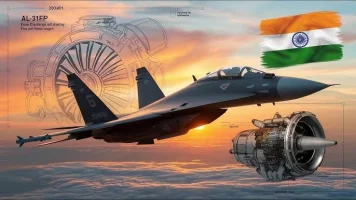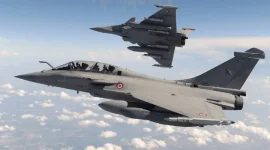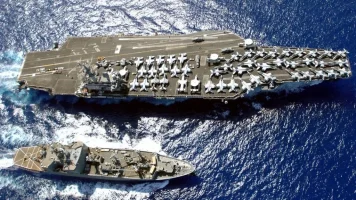- Views: 4K
- Replies: 20
India's ambitious plan to bolster its air power by producing nearly 500 advanced fighter jets over the next two decades is facing a critical hurdle: securing a reliable supply of engines. This challenge threatens to impede the nation's efforts to modernize its air force and maintain a strategic edge in the region.
The Indian Air Force (IAF) currently operates with 31 fighter squadrons, falling short of the 42 squadrons deemed necessary to counter potential threats from neighboring Pakistan and China. To address this gap and replace aging aircraft, India aims to manufacture 180 Tejas Mark-1A, 108 Tejas Mark-2, 126 Advanced Medium Combat Aircraft (AMCA), and 100 Twin-Engine Deck-Based Fighters (TEDBF) for the Indian Navy.
However, delays in engine deliveries have already impacted the production of the Tejas Mark-1A. Hindustan Aeronautics Limited (HAL), tasked with manufacturing the jets, has yet to deliver a single aircraft to the IAF due to a shortage of engines from US-based General Electric (GE). This delay stems from a 2021 contract with GE for 'F414' engines, valued at $716 million, which has experienced significant setbacks.
While negotiations are ongoing with both GE and French company Safran for future engine supplies, concerns remain about India's reliance on foreign manufacturers. This dependence has prompted a renewed focus on domestic engine development, with ongoing programs like the Kaveri engine for the Tejas and the Kaveri 2.0 for the AMCA.
The success of these indigenous engine programs is crucial for India's self-reliance in defense technology and its ability to meet its ambitious fighter jet production targets. As the IAF phases out aging MiG-21, Jaguar, MiG-29, and Mirage 2000 jets in the coming years, the pressure to deliver these new aircraft will intensify.
The coming two decades will be a defining period for the Indian Air Force. Addressing the engine shortage and ensuring a steady supply of reliable power plants for its new fighter jets will be vital for India to maintain air superiority and safeguard its national security.




